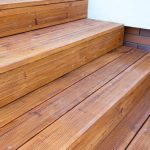Having a strong carrier signal in your home is crucial for enjoying seamless connectivity and optimal performance of your devices. Whether you use Wi-Fi, mobile data, or any other carrier service, a weak signal can lead to frustrating experiences such as slow internet speeds, dropped calls, or buffering videos. In this article, we will explore the importance of a strong carrier signal in your home and provide tips on how to improve it.
In today’s digital age, our reliance on technology and internet connectivity has increased significantly. From working remotely to streaming movies and playing online games, a strong carrier signal is necessary for all our daily activities. Without it, we may experience interruptions in communication and entertainment which can cause inconvenience and frustration.
Identifying signal strength problems in your home is the first step towards improving your carrier signal. There are common issues that can affect the strength of your signal such as distance from the router, interference from other electronic devices, or even structural obstacles like walls or floors. By understanding these problems, you can take appropriate measures to address them effectively.
To optimize your carrier signal, there are simple steps you can take to improve its strength. These include positioning your router in an optimal location, minimizing interference from other devices, upgrading your equipment if necessary, and employing strategies to boost Wi-Fi performance. Additionally, there are various signal boosting devices available on the market that can amplify carrier signals and extend their range.
In the following sections of this article, we will delve deeper into assessing the quality of your carrier signal and provide troubleshooting tips for common issues that may arise. We will also discuss different techniques for enhancing Wi-Fi signals and maximizing coverage throughout your home by addressing Wi-Fi dead zones. Finally, we will explore how to future-proof your signal by preparing for advancements in technology.
By taking action to enhance your carrier signal at home using the tips provided in this article, you can ensure uninterrupted connectivity and enjoy a seamless browsing experience no matter where you are in your house. Stay tuned for the following sections where we will delve deeper into managing carrier signal issues and improving your overall connectivity.
Common Issues
Signal strength problems in your home can disrupt your connectivity and affect the performance of your carrier signal. Identifying these issues is crucial in order to address them effectively. Here are some common problems that may indicate weak signal strength in your home:
1. Slow Internet Speed: If you frequently experience slow internet speed, it could be a sign of poor signal strength. This can make tasks such as downloading files or streaming videos frustratingly slow.
2. Frequent Disconnections: If your devices often disconnect from the network or experience intermittent connectivity, it may indicate signal strength problems. This can result in dropped calls, interrupted video chats, and an overall unreliable connection.
3. Poor Call Quality: If you hear echo, static, or experience dropped calls during phone conversations, it could be due to weak carrier signal strength. This issue affects both cellular calls and Voice over IP (VoIP) services.
To assess the quality of your carrier signal and identify any potential issues, there are several tests you can perform:
1. Speed Test: Conduct a speed test using online tools or dedicated apps to measure your download and upload speeds. Compare the results with what you should be getting based on your internet plan.
2. Signal Strength Meter: Use a signal strength meter app on your smartphone or tablet to measure the level of cellular signal in different areas of your home. This will help you identify any areas with weak coverage.
3. Ping Test: Ping tests measure the response time between your device and a specific server or website by sending small data packets and receiving replies. A high ping indicates poor connection quality.
Once you have identified that weak signal strength is causing issues in your home, it’s important to take steps to improve it for better connectivity throughout your space.
- Begin by repositioning your router or modem to a more centralized location in your home. This will help distribute the signal more evenly and reduce obstructions that may be disrupting the signal.
- Ensure that your router’s firmware is up to date. Manufacturers often release updates that can improve performance and stability.
- Consider using a Wi-Fi extender or mesh network system to expand your signal coverage. These devices help amplify the signal and eliminate dead zones in larger homes or areas with thick walls.
By following these tips, you can effectively identify common issues associated with weak signal strength in your home and take steps to improve it for a better overall connectivity experience.
Assessing the Quality of Your Carrier Signal
When it comes to improving the carrier signal in your home, it is essential to first assess the quality of your current signal. This will allow you to determine the strength and stability of your carrier signal and identify any areas that may need improvement.
Signal Strength Test
One way to assess the quality of your carrier signal is by conducting a signal strength test. There are several online tools and smartphone apps available that can provide you with information about the strength of your carrier signal.
These tools typically measure the signal strength in decibels (dBm) and can give you an indication of whether your signal is weak or strong. It is important to note that different carriers have different standards for signal strengths, so it is recommended to consult with your carrier to understand their specific guidelines.
Stability Test
Aside from signal strength, it is also crucial to evaluate the stability of your carrier signal. A stable signal ensures consistent connectivity without sudden drops or interruptions. To test stability, you can conduct a ping test, which measures the response time between your device and a server.
A high ping value indicates a less stable connection, while a low ping value suggests a more stable connection. Additionally, monitor if there are dead zones in your home where there is no connectivity at all or areas where the signal becomes weaker.
By conducting these tests, you gain valuable insight into how well your carrier signal performs within your home. This knowledge will serve as a foundation for implementing strategies later on to optimize and enhance your carrier signal effectively.
Tips for Optimizing Your Carrier Signal
Position your router strategically
One of the simplest ways to optimize your carrier signal is by positioning your router in the right location. Choose a central spot in your home where the signal can reach every room efficiently. Avoid placing it near objects that could interfere with the signal, such as walls, large furniture, or appliances. Ideally, your router should be elevated and placed at a height that allows it to broadcast the signal evenly.
Update your router’s firmware
Router manufacturers often release firmware updates to improve performance and address any security vulnerabilities. Check the manufacturer’s website regularly for firmware updates specific to your router model and install them promptly. Updating the firmware can help enhance the signal strength and stability of your carrier network.
Secure your network
Securing your carrier network not only protects you from unauthorized access but also ensures that unwanted devices are not leeching off your bandwidth, which can slow down your signal strength. Enable password protection and encryption on your Wi-Fi network using strong passwords or passphrases. Additionally, consider enabling features like MAC filtering to only allow specific devices to connect to your network.
Reduce interference from other devices
Other electronic devices operating on similar frequencies as your carrier signal can cause interference and reduce its strength. Cordless phones, baby monitors, microwave ovens, and Bluetooth devices are common culprits. Keep these devices away from your router or switch them off when not in use to minimize interference.
Use Wi-Fi extenders or mesh systems
If you have large areas in your home where the Wi-Fi coverage is weak, consider using Wi-Fi extenders or mesh systems to boost the signal strength in those areas. These devices act as additional access points and help extend the reach of your carrier signal without sacrificing speed.
By implementing these simple tips, you can optimize your carrier signal and improve the overall connectivity in your home. Remember that a strong and stable carrier signal is crucial for seamless browsing, streaming, and online gaming experiences.
Enhancing Wi-Fi Signal
Having a strong and reliable Wi-Fi signal is essential for a seamless and uninterrupted internet experience in your home. Slow or weak Wi-Fi can be frustrating, especially when you’re trying to work, stream movies, or play online games. In this section, we will explore some effective strategies to boost the performance of your Wi-Fi signal.
One of the first steps in enhancing your Wi-Fi signal is to find the optimal location for your wireless router. Place it in a central area of your home, away from obstructions such as walls and furniture that may interfere with the signal. A higher position, such as on a shelf or mounted on a wall, can also help improve coverage.
Another strategy to boost your Wi-Fi performance is to optimize the channel selection on your router. Most routers automatically select channels, but they can sometimes become crowded due to nearby networks or devices. Use an app or software tool to scan for nearby networks and choose a less congested channel for your router.
In addition to these basic strategies, there are several advanced techniques you can try to enhance your Wi-Fi signal. One option is to upgrade your router’s firmware to the latest version provided by the manufacturer. Firmware updates often include improvements that can enhance performance and fix bugs.
Investing in a Wi-Fi range extender or mesh system is another effective strategy for boosting your Wi-Fi signal. These devices help extend the coverage range of your existing Wi-Fi network by amplifying the signal or creating additional access points throughout your home.
To summarize:
- Find an optimal location for your wireless router and place it centrally in your home.
- Select an uncongested channel for your router.
- Upgrade your router’s firmware regularly.
- Consider using Wi-Fi range extenders or mesh systems for wider coverage.
By implementing these strategies, you can significantly improve the performance of your Wi-Fi signal and enjoy seamless connectivity throughout your home.
Signal Boosting Devices
In order to improve the carrier signal in your home, you may need to consider using signal boosting devices. These devices are specifically designed to amplify the strength and reach of your carrier signal, ensuring better connectivity throughout your home. There are several different options available for signal boosting, each with its own advantages and considerations.
One popular option for amplifying carrier signals is a Wi-Fi range extender or repeater. These devices work by receiving the existing Wi-Fi signal from your router and then rebroadcasting it, effectively extending the range of your Wi-Fi network. Range extenders are particularly useful in larger homes or areas with multiple floors where the Wi-Fi signal may struggle to reach certain areas.
Another option for improving carrier signals is a cellular signal booster. This device works by capturing weak cellular signals outside your home, amplifying them, and then rebroadcasting them inside. A cellular signal booster can be especially beneficial if you live in an area with poor cell reception or if you have thick walls and other obstructions that interfere with cellular signals.
If you’re looking for a more comprehensive solution, you might consider investing in a mesh Wi-Fi system. Unlike traditional routers, mesh Wi-Fi systems use multiple nodes placed strategically throughout your home to create a mesh network. This allows for seamless roaming and consistent connectivity as you move around your home. Additionally, some mesh systems offer built-in signal boosting capabilities to further enhance your carrier signal.
When choosing a signal boosting device, it’s important to assess your specific needs and requirements. Consider factors such as the size of your home, the number of devices connected to the network, and any unique challenges that may affect your carrier signal. It’s also advisable to read product reviews and consult with professionals in order to select the most suitable option for your situation.
By exploring these different options for amplifying carrier signals through signal boosting devices, you can significantly improve connectivity and ensure a stronger signal throughout your home. Whether you opt for a Wi-Fi extender, cellular booster, or mesh Wi-Fi system, taking advantage of these devices will help you enjoy seamless connectivity and make the most out of your internet service.
Home Layout Considerations
In today’s connected world, a strong and reliable carrier signal is essential for seamless connectivity at home. However, many homes experience Wi-Fi dead zones where the signal strength is weak or non-existent. These dead zones can be frustrating, especially when they occur in areas where you need a stable internet connection the most. This section will explore some home layout considerations that can help maximize signal coverage and address Wi-Fi dead zones in your home.
One important consideration is the placement of your router. Ideally, the router should be positioned in a central location in your home to ensure that the signal reaches all areas evenly. If your router is currently tucked away in a corner or hidden behind furniture, it may not be providing optimal coverage. Consider repositioning the router to a more central and elevated location to improve its range.
Additionally, the construction materials used in your home can have a significant impact on the strength of your carrier signal. Materials such as concrete and metal can obstruct Wi-Fi signals and create dead zones. If you have noticed weak Wi-Fi signals in certain areas of your home, take note of any nearby walls or objects that could be causing interference.
Another consideration is the distance between your devices and the router. The farther away a device is from the router, the weaker the signal will be. If you frequently experience poor connection in certain rooms or areas far from the router, consider using Wi-Fi extenders or mesh systems to expand coverage throughout your home.
By addressing these layout considerations, you can maximize signal coverage and minimize Wi-Fi dead zones in your home. Ensuring that every corner of your house receives a strong carrier signal will greatly improve connectivity and enhance your overall internet experience.
| Consideration | Possible Solutions |
|---|---|
| Router Placement | Reposition the router to a more central and elevated location |
| Construction Materials | Identify any nearby walls or objects that could be causing interference and find alternative positioning for the router or use range extenders/mesh systems |
| Distance from Router | Use Wi-Fi extenders or mesh systems to expand coverage throughout your home |
Troubleshooting Tips
In this section, we will discuss some common carrier signal issues that homeowners may encounter and provide troubleshooting tips to resolve them. A weak or unstable carrier signal can result in dropped calls, slow internet speeds, and poor connectivity overall. By identifying the causes of these issues and taking appropriate steps to resolve them, you can enjoy a stronger and more reliable carrier signal in your home.
One common issue that can affect carrier signal strength is interference from other electronic devices. Devices such as cordless phones, baby monitors, microwave ovens, and even certain types of lighting can cause interference with the carrier signal. To troubleshoot this issue, try moving any offending devices away from your wireless router or modem. Alternatively, you can use devices specifically designed to mitigate interference, such as Wi-Fi range extenders or mesh Wi-Fi systems.
Another potential cause of weak carrier signals is outdated or incompatible equipment. If your router or modem is old or not designed to handle high-speed connections, it may be limiting the strength and stability of your carrier signal. In such cases, upgrading to a newer model that supports the latest standards (such as 802.11ac for Wi-Fi) can significantly improve signal quality.
Additionally, physical barriers like walls, floors, and furniture can obstruct the transmission of your carrier signal. Thick walls made of materials like concrete or metal are particularly effective at blocking signals. To address this issue, consider relocating your wireless router to a central location in your home for better coverage. You may also explore options like installing additional access points or using Wi-Fi repeaters to extend the reach of your carrier signal.
| Common Issue | Troubleshooting Tip |
|---|---|
| Interference from other electronic devices | Move devices away from router or use interference-mitigating devices |
| Outdated or incompatible equipment | Upgrade to a newer model that supports latest standards |
| Physical barriers (walls, floors, furniture) | Relocate router, install access points, or use Wi-Fi repeaters for better coverage |
Future-Proofing Your Signal
With technology constantly advancing, it is essential to future-proof your home’s carrier signal to ensure seamless connectivity for future technologies. By taking a proactive approach and making some simple adjustments, you can prepare your home for the next generation of devices and services. Here are some strategies to consider for future-proofing your signal.
One important aspect of future-proofing your signal is ensuring that your home network has sufficient bandwidth. As new technologies emerge, they often require faster internet speeds and higher data transfer rates. Upgrading to a higher-speed internet plan can provide the necessary bandwidth to support these advancements. Additionally, consider investing in a router that supports the latest Wi-Fi standards, such as Wi-Fi 6 (802.11ax), which offers increased speed and capacity compared to previous generations.
Another consideration for future-proofing your signal is optimizing the placement of your wireless router. Place it in a central location within your home to ensure coverage throughout all areas. Avoid placing it near any obstacles or interference sources, such as walls or other electronic devices, as they can weaken the signal strength. Additionally, positioning the router at an elevated height can help improve its coverage range.
In addition to optimizing your router placement, consider implementing mesh Wi-Fi systems or range extenders to expand coverage in larger homes or areas with weak signals. Mesh Wi-Fi systems use multiple access points placed strategically throughout the house to create a unified network, providing better coverage and reducing dead zones. Range extenders amplify the existing signal from your router and rebroadcast it to extend coverage further.
By taking these steps now to future-proof your home’s carrier signal, you will be ready for upcoming technological advancements and ensure a reliable connection for years to come. With seamless connectivity throughout your home, you can fully enjoy all that future technologies have to offer without worrying about weak signals or dropped connections.
Conclusion
In conclusion, having a strong carrier signal in your home is crucial for seamless connectivity and optimal performance of your devices. By understanding the importance of signal strength and identifying common issues that may affect it, you can take steps to improve and optimize your carrier signal.
One of the first things you should do is to assess the quality of your carrier signal by testing its strength and stability. This will help you pinpoint any weak areas or interference sources that may be affecting your signal.
Once you have identified these issues, there are several simple steps you can take to optimize your carrier signal. These include positioning your router in a central location, removing any obstructions that may block the signal, and ensuring that your router is up-to-date with the latest firmware.
Another important aspect of improving carrier signal in your home is enhancing Wi-Fi performance. Strategies such as changing the Wi-Fi channel, setting up a guest network, or investing in a mesh Wi-Fi system can greatly boost your Wi-Fi coverage and performance.
Furthermore, if you are still experiencing weak signals even after optimizing your setup, you may consider using signal boosting devices. There are various options available including range extenders, powerline adapters, mesh Wi-Fi systems with additional nodes, or even cellular boosters depending on your specific needs.
In addition to addressing the technical aspects of improving carrier signals in your home, it is also important to consider the layout of your house. By identifying and addressing Wi-Fi dead zones through methods like strategically placing equipment or using access points or range extenders, you can expand signal coverage throughout your entire home.
Finally, future-proofing your signal by preparing for future technologies is key. Keep an eye on emerging trends and advancements in wireless technology so that you can adapt and upgrade as necessary to ensure seamless connectivity for years to come.
Frequently Asked Questions
How can I boost my carrier signal?
Boosting your carrier signal can be done through a few different methods. One way is to move to a location where you have better line of sight to the cell tower, as obstructions such as buildings and trees can weaken the signal. Additionally, ensuring that your phone’s antenna is not obstructed and keeping it away from other electronic devices can help improve signal strength.
Another option is to switch your carrier if you consistently have poor reception with your current provider. Finally, using a signal booster or repeater can amplify the existing signal in your home or office, improving coverage.
What happens when you dial * 3370?
When you dial *3370 on some cell phones, it activates a feature called “Enhanced Full Rate” (EFR), which enhances the voice quality during calls but reduces battery life. Essentially, this feature compresses the audio data during transmission, resulting in clearer sound for both parties involved in the call.
However, it should be noted that this feature may not be available on all phone models or carriers, so dialing *3370 may not have any effect if it is not supported.
Do cell phone signal boosters really work?
Yes, cell phone signal boosters do work when properly installed and used within their specified range. These devices are designed to capture weak signals from nearby cell towers and amplify them to improve overall coverage and reception within a given area like homes or offices. They consist of an outside antenna to capture the signal, an amplifier to boost it, and an inside antenna to distribute the amplified signal throughout the desired area.
However, it’s important to note that these boosters are not magic solutions and cannot create a cellular network where none exists. They rely on an existing outside signal to amplify, so they will only work if there is at least some minimal reception available in the area where they are installed.

I’m thrilled to have you here as a part of the Remodeling Top community. This is where my journey as an architect and remodeling enthusiast intersects with your passion for transforming houses into dream homes.





